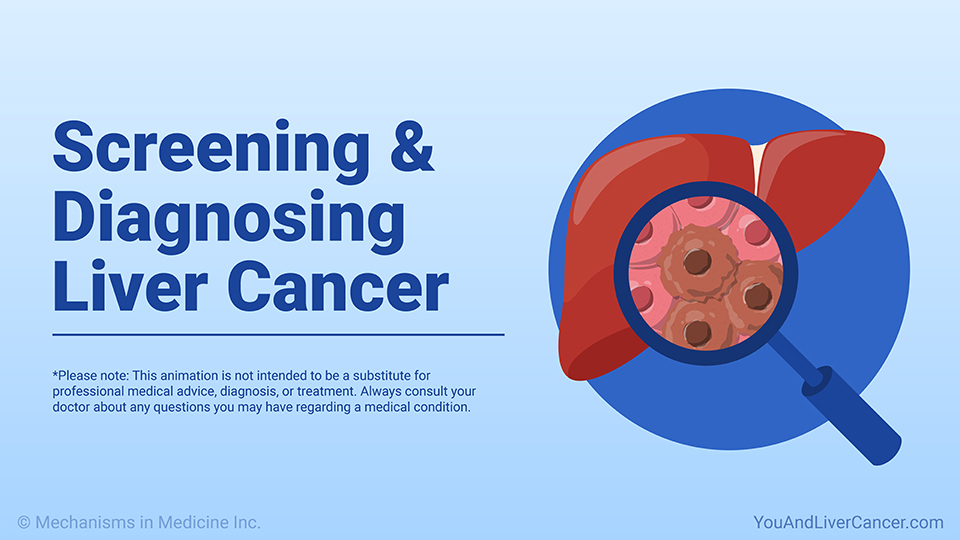Understanding Fatty Liver Disease and HCC
*Please note: This slide show is not intended to be a substitute for professional medical advice, diagnosis, or treatment. Always consult your doctor about any questions you may have regarding a medical condition.
About the liver and hepatocellular carcinoma (HCC)
Your liver performs many essential functions. For example, it helps remove toxins from your body and store necessary nutrients.
About the liver and hepatocellular carcinoma (HCC)
Cancer that starts in the liver cells is called primary liver cancer or hepatocellular carcinoma, HCC for short. Nine out of 10 liver cancers are HCCs.
HCC is becoming more common
In the last 20 years, HCC has become more common. One reason is the increase in a specific risk factor, fatty liver disease. About 30 percent of adults worldwide have this condition.1
Fatty liver disease is also called non-alcoholic fatty liver disease or a newer term, metabolic dysfunction-associated steatotic liver disease, or MASLD.2
How fat harms your liver
It is normal to have some fat in your liver. But when more than 5 to 10 percent is fat, doctors say you have MASLD or the common term fatty liver disease.3
The fat buildup makes it harder for the liver to perform its functions. Fat also leads to liver inflammation. Long-term inflammation can lead to cirrhosis, which often leads to liver cancer.4
How fatty liver disease starts and progresses
As fat buildup from MASLD damages the liver, a more serious condition called MASH can develop. MASH stands for metabolic-associated steatohepatitis. This condition was previously called NASH and you may also hear it called non-alcoholic steatohepatitis.
Whatever you and your doctor call it, it's important to know that MASH puts you at greater risk of cirrhosis, which raises the risk of HCC.
What are the risk factors for MASH?
The term 'metabolic associated' signals that both these liver conditions are associated with metabolic syndrome, a combination of high blood pressure and blood sugar, unhealthy cholesterol levels, and extra weight around the waist.
Metabolic syndrome is linked to heart disease, stroke, and other conditions as well as liver disease, so taking steps to prevent and treat MASH can help your general health.5
Other risk factors for MASLD and MASH
Other risk factors for MASLD and potentially MASH include:
- Being over 50 (although children can also get it)
- Having Hispanic heritage6
- Having obstructive sleep apnea6
Not everyone with MASLD develops MASH. Genetics may play a part in why some people do and others don't.7
Does MASH cause symptoms?
Most people with MASLD do not have any symptoms until it is at an advanced stage. As the condition progresses to MASH,8 symptoms can include:
- Feeling tired
- Pain on the upper right side of your abdomen, where your liver is located
Signs of liver failure, including yellow eyes or skin, retaining fluid in the abdomen, or confusion.
MASH risk factors you can control
It is possible to control some risk factors for MASH and help prevent liver cancer. You can:9
- Lose weight
- Exercise
- Avoid alcohol and smoking
- Control diabetes, high blood pressure, and cholesterol
If you have MASH, it's also important to get vaccines to prevent hepatitis A and B.
Important examinations and tests
If you have MASLD that may progress to MASH, your doctor will probably:
- Ask about your medical history and any conditions that could harm your liver
- Measure your waist
- Calculate your body mass index (BMI) , the amount you weigh for your height
- Do blood tests to check liver enzymes, cholesterol levels, and any signs of liver scarring, as well as hepatitis C
- Recommend a CT scan to check for liver scarring
Diagnosing MASH
If tests indicate you may have MASH, a specialist may take a small sample of tissue from your liver and examine it under a microscope in a test called a biopsy.
Can MASH be cured?
If you have MASH and enough inflammation to cause stiffening of liver tissue, called fibrosis, your doctor may recommend medication. With diet and exercise, this may help reduce MASH and fibrosis.9 Your doctor may also recommend medications to help treat MASH and/or obesity.
Researchers are working to identify more ways to treat MASH and prevent cirrhosis and HCC.
Finding help and information
If you have questions about HCC and how to help prevent it, Blue Faery is a liver cancer advocacy and support group that can help. Visit bluefaery.org to learn more or find a support group.
References
- Amini-Salehi E, Letafatkar N, Norouzi N, Joukar F, Habibi A, Javid M, Sattari N, Khorasani M, Farahmand A, Tavakoli S, Masoumzadeh B, Abbaspour E, Karimzad S, Ghadiri A, Maddineni G, Khosousi MJ, Faraji N, Keivanlou MH, Mahapatro A, Gaskarei MAK, Okhovat P, Bahrampourian A, Aleali MS, Mirdamadi A, Eslami N, Javid M, Javaheri N, Pra SV, Bakhsi A, Shafipour M, Vakilpour A, Ansar MM, Kanagala SG, Hashemi M, Ghazalgoo A, Kheirandish M, Porteghali P, Heidarzad F, Zeinali T, Ghanaei FM, Hassanipour S, Ulrich MT, Melson JE, Patel D, Nayak SS. Global Prevalence of Nonalcoholic Fatty Liver Disease: An Updated Review Meta-Analysis comprising a Population of 78 million from 38 Countries. Arch Med Res. 2024 Sep;55(6):103043.
- Huang DQ, Wong VWS, Rinella ME, Boursier J, Lazarus JV, Yki-Järvinen H, Loomba R. Metabolic dysfunction-associated steatotic liver disease in adults. Nat Rev Dis Primers. 2025 Mar 6;11(1):14.
- American Liver Foundation. Nonalcoholic fatty liver disease (NAFLD). Last revised: February 13, 2025.
https://liverfoundation.org/liver-diseases/fatty-liver-disease/nonalcoholic-fatty-liver-disease-nafld
- American Liver Foundation. NASH complications. Last revised: January 18, 2025.
https://liverfoundation.org/liver-diseases/fatty-liver-disease/nonalcoholic-steatohepatitis-nash/nash-complications
- National Heart, Lung and Blood Institute. What is metabolic syndrome? Last revised: May 18, 2022.
https://www.nhlbi.nih.gov/health/metabolic-syndrome
- American Liver Foundation. NASH causes and risk factors. Last revised: January 18, 2024.
https://liverfoundation.org/liver-diseases/fatty-liver-disease/nonalcoholic-steatohepatitis-nash/nash-causes-risk-factors
- American Liver Foundation. NASH definition & prevalence. What is fatty liver disease? Last revised: January 18, 2024.
https://liverfoundation.org/liver-diseases/fatty-liver-disease/nonalcoholic-steatohepatitis-nash/nash-definition-prevalence
- Fatty Liver Foundation. What is NAFLD?
https://www.fattyliverfoundation.org/what_is_nafld#gsc.tab=0
- American Liver Foundation. Nonalcoholic steatohepatitis treatment. Last revised: July 5, 2024.
https://liverfoundation.org/liver-diseases/fatty-liver-disease/nonalcoholic-steatohepatitis-nash/nash-treatment
This slide show provides an overview of
fatty liver disease and
hepatocellular carcinoma (
HCC). In the last 20 years, HCC, has become more common. One reason is the increase in a specific risk factor,
fatty liver disease. Fatty liver disease is also called
non-alcoholic fatty liver disease or a newer term,
metabolic dysfunction-associated steatotic liver disease (
MASLD). As fat buildup from MASLD damages the liver, a more serious condition called
metabolic-associated steatohepatitis (
MASH), can develop. Click through to learn how fat harms your liver, how fatty liver disease starts and progresses, risk factors for MASLD and MASH, symptoms, important examinations and tests, and more.
-
Share with family and friends:
Click here to take our SURVEY
Your feedback is important to us! We will use your feedback to develop future areas of content about liver cancer which will help other patients, caregivers, and families.































